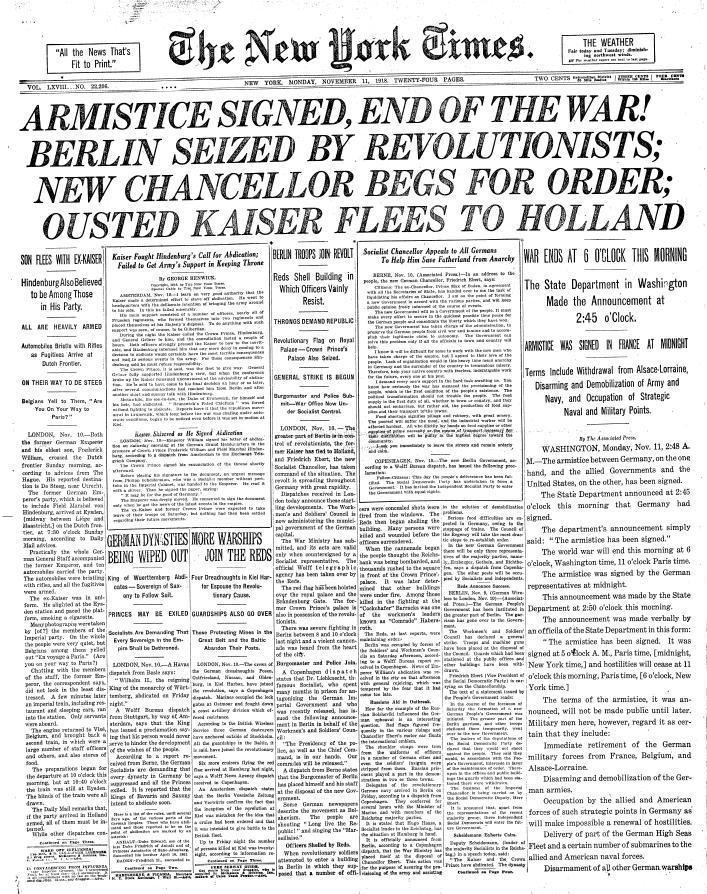 | ||
The headline is the text indicating the nature of the article below it.
Contents
The large type front page headline did not come into use until the late 19th century when increased competition between newspapers led to the use of attention-getting headlines.
It is sometimes termed a news hed, a deliberate misspelling that dates from production flow during hot type days, to notify the composing room that a written note from an editor concerned a headline and should not be set in type.
Headlines in English often use a set of grammatical rules known as headlinese, designed to meet stringent space requirements by, for example, leaving out forms of the verb "to be" and choosing short verbs like "eye" over longer synonyms like "consider".
Production of headlines
A headline's purpose is to quickly and briefly draw attention to the story. It is generally written by a copy editor, but may also be written by the writer, the page layout designer, or other editors. The most important story on the front page above the fold may have a larger headline if the story is unusually important. The New York Times's 21 July 1969 front page stated, for example, that "MEN WALK ON MOON", with the four words in gigantic size spread from the left to right edges of the page.
The film The Shipping News has an illustrative exchange between the protagonist, who is learning how to write for a local newspaper, and his publisher:
Publisher: It's finding the center of your story, the beating heart of it, that's what makes a reporter. You have to start by making up some headlines. You know: short, punchy, dramatic headlines. Now, have a look, [pointing at dark clouds gathering in the sky over the ocean] what do you see? Tell me the headline.Protagonist: HORIZON FILLS WITH DARK CLOUDS?Publisher: IMMINENT STORM THREATENS VILLAGE.Protagonist: But what if no storm comes?Publisher: VILLAGE SPARED FROM DEADLY STORM.In the United States, headline contests are sponsored by the American Copy Editors Society, the National Federation of Press Women, and many state press associations.
Unusual headlines
A number of newspapers use humour, puns, alliteration or other word play devices in their headlines. Equally, the need to keep headlines brief occasionally leads to unintentional double meanings, if not double entendres. For example, if the story is about the president of Iraq trying to acquire weapons, the headline might be IRAQI HEAD SEEKS ARMS, or if some agricultural legislation is defeated in the United States House of Representatives, the title could read FARMER BILL DIES IN HOUSE.
Editor of The New Republic, Michael Kinsley, began a contest to find the most boring newspaper headline. According to him, no entry surpassed the one that had inspired him to create the contest: "WORTHWHILE CANADIAN INITIATIVE", over a column by The New York Times' Flora Lewis.
